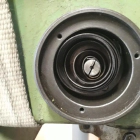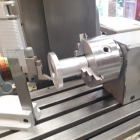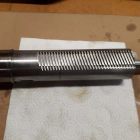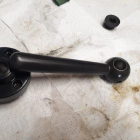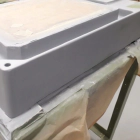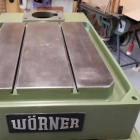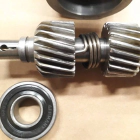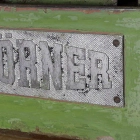This is how the drilling machine return spring looks when I opened the cover:
A previous owner did a not very successful repair and modified the internal attachment of the spring. As a result, spring was badly deformed and have a unusual feeling during the descent. I extracted it by pulling it out of the cup and then giving it a quarter turn to free the external end from its attachment (it has a rectangular shape as you will see next).
